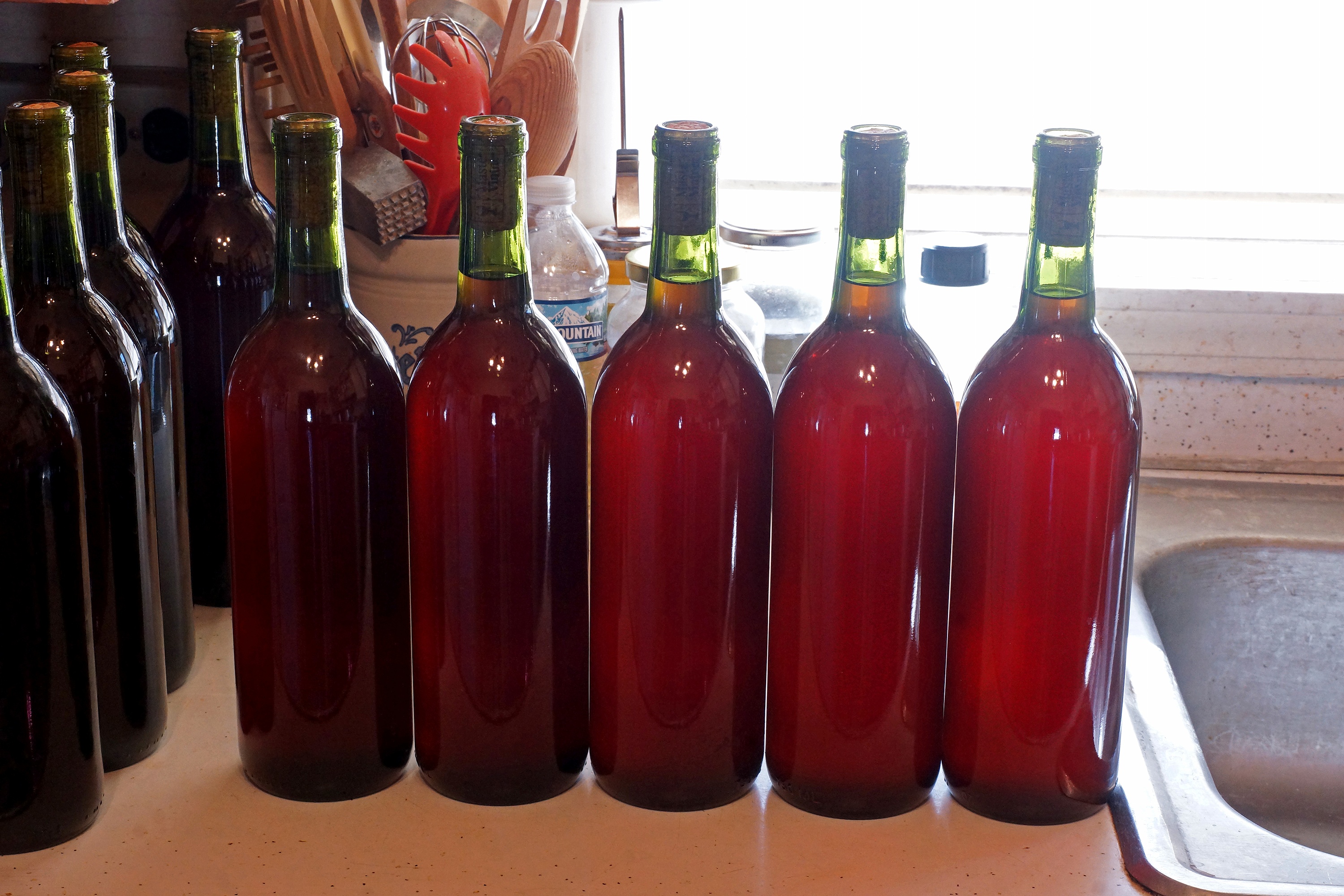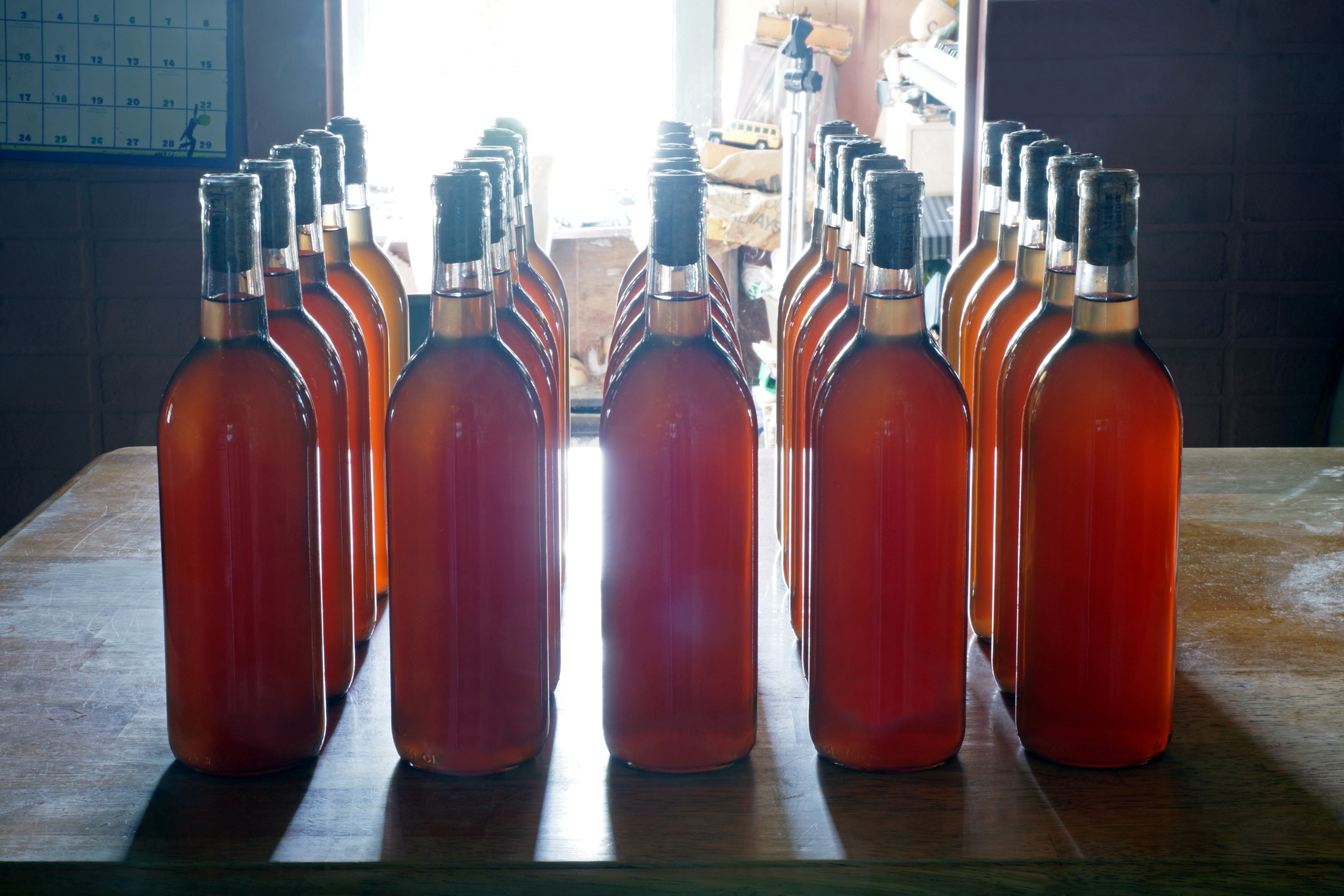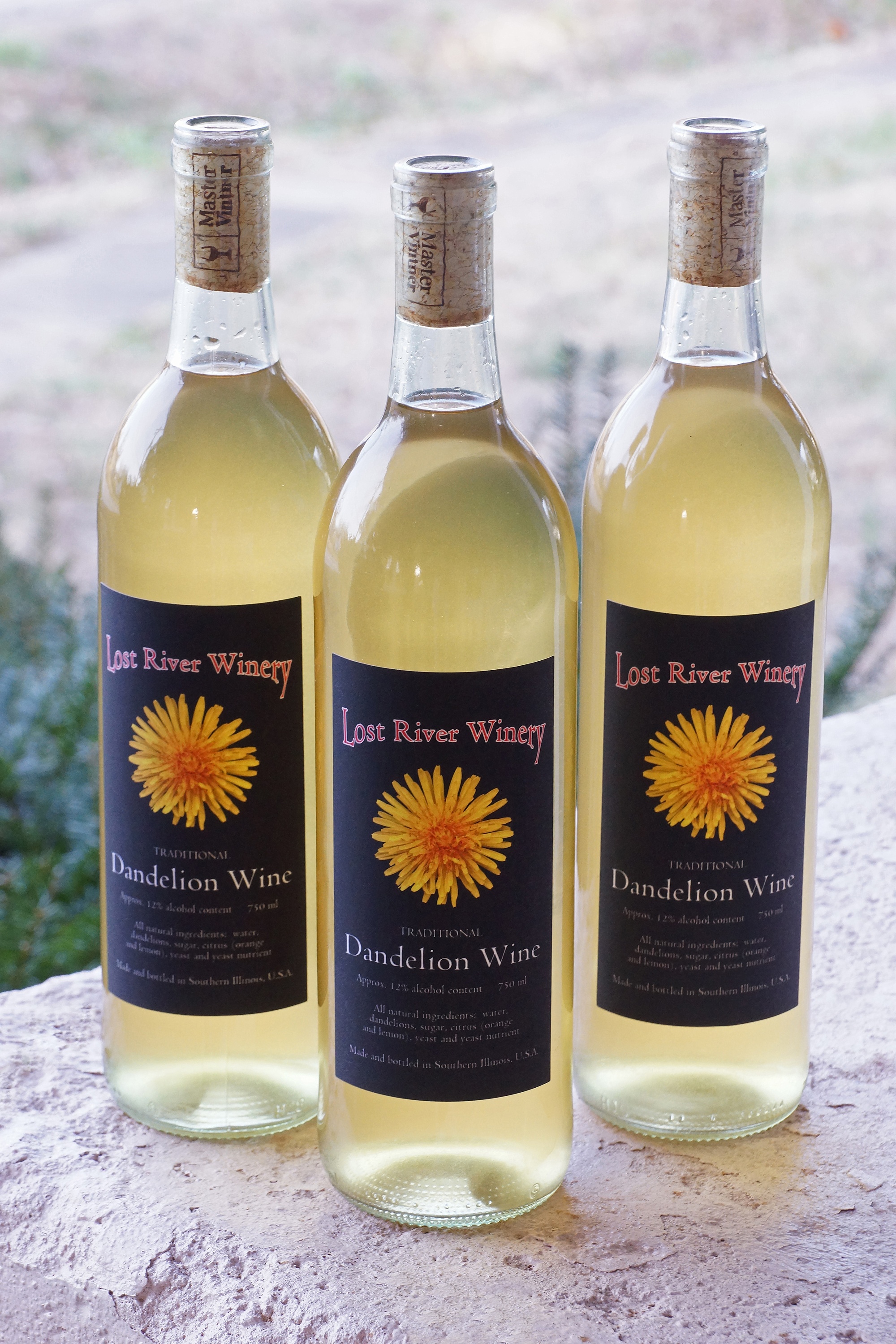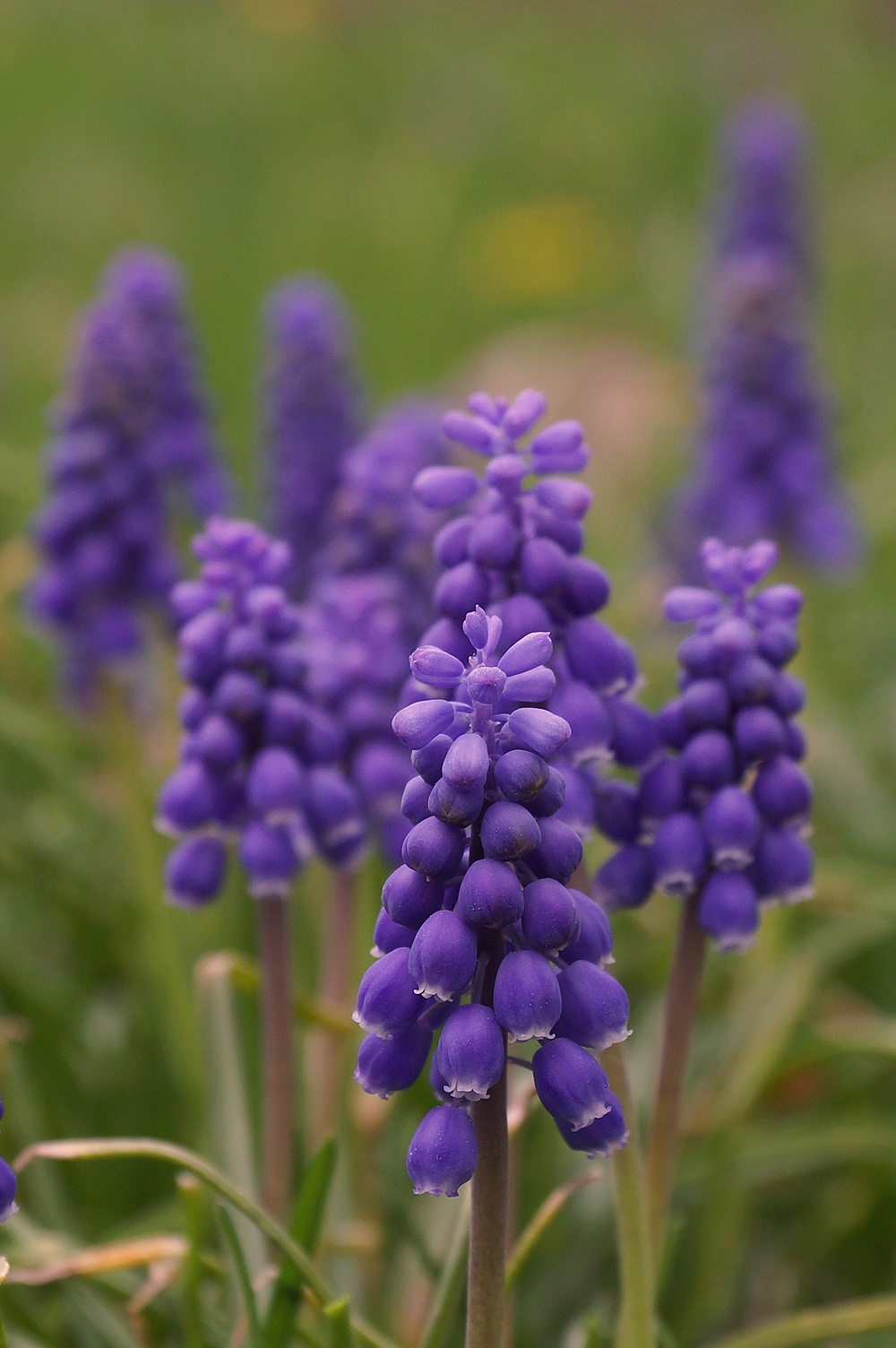It looks like you're using an Ad Blocker.
Please white-list or disable AboveTopSecret.com in your ad-blocking tool.
Thank you.
Some features of ATS will be disabled while you continue to use an ad-blocker.
share:
a reply to: Lumenari
So, we will be wildcrafting our Elderberries and black berries. We grow blue berries, black and strawberry...so I thank you kindly for your recipe.
We have a glut of purple and yellow plums, wife fermented 4 gallons of green to make maesil-cheong last year, but I would like to both make plum wine as well as take a shot of distilling some. I have a 30 liter copper alembic and a 3 liter for experiments...not a ton of distillation experience though.
Any wisdom to drop on the plum wine neophyte?
So, we will be wildcrafting our Elderberries and black berries. We grow blue berries, black and strawberry...so I thank you kindly for your recipe.
We have a glut of purple and yellow plums, wife fermented 4 gallons of green to make maesil-cheong last year, but I would like to both make plum wine as well as take a shot of distilling some. I have a 30 liter copper alembic and a 3 liter for experiments...not a ton of distillation experience though.
Any wisdom to drop on the plum wine neophyte?
originally posted by: BlueJacket
a reply to: Lumenari
So, we will be wildcrafting our Elderberries and black berries. We grow blue berries, black and strawberry...so I thank you kindly for your recipe.
We have a glut of purple and yellow plums, wife fermented 4 gallons of green to make maesil-cheong last year, but I would like to both make plum wine as well as take a shot of distilling some. I have a 30 liter copper alembic and a 3 liter for experiments...not a ton of distillation experience though.
Any wisdom to drop on the plum wine neophyte?
Plums are a favorite of mine, actually.
Since you grow them, pick about 9 pounds, pit them.
Do NOT boil them because you are going to take advantage of the natural yeast you have on them.
Sweet is an issue with the recipe... my yellow plums are twice as sweet as my black plums, which are twice as sweet as my red plums.
For the middle ground (black or purple plums) use 6 pounds of sugar.
Add the sugar and plums (halved in the skin) into a 5 gallon jug, add water, let sit with the airlock in until it is 70 degrees or room temp, add wine yeast and let it run.
When the airlock stops bubbling, taste it.
Too dry for you, add 2 more lbs of sugar and let it ferment again.
It's not going to be too sweet.
When it has stopped fermenting and you are happy with the pucker factor of it, you are now faced with a fun choice.
You CAN strain it into another container, add smoked wood chips and let it sit to clarify.
Pro Tip... a single vanilla bean thrown into the mix adds an amazing back-flavor to a plum wine.
OR.
You can add wood chips, 4 more lbs of sugar and DADY yeast.
THEN let it run until the bubbles stop, strain and let clarify.
The difference is if you double ferment, you will have a lot more flavor (time and maceration!) and will be at roughly 20% abv.
Hope that helped!
a reply to: Lumenari
Thank you so much for your experience. My wife jumped up when I showed her. She used the plum yeast last year to start the most amazing sour dough start you've ever had the pleasure to work with...has an apple aroma difficult to describe.
We collect wild yeasts anywhere we can find them, elder berries are coated in yeast come August. I look forward to letting you know how it goes.
Thank you
Thank you so much for your experience. My wife jumped up when I showed her. She used the plum yeast last year to start the most amazing sour dough start you've ever had the pleasure to work with...has an apple aroma difficult to describe.
We collect wild yeasts anywhere we can find them, elder berries are coated in yeast come August. I look forward to letting you know how it goes.
Thank you
originally posted by: BlueJacket
a reply to: Lumenari
Thank you so much for your experience. My wife jumped up when I showed her. She used the plum yeast last year to start the most amazing sour dough start you've ever had the pleasure to work with...has an apple aroma difficult to describe.
We collect wild yeasts anywhere we can find them, elder berries are coated in yeast come August. I look forward to letting you know how it goes.
Thank you
I had posted a rant here but it wasn't on-topic so I edited.
You may want to make a thread on collecting wild yeasts.
I'd love to read it.
We make our own bread from a family sourdough yeast starter we've had forever.
I've never really thought about using different wild yeasts though.
I'm interested!!!
edit on 29-4-2020 by Lumenari because: (no reason given)
originally posted by: Lumenari
You can either use recycled bottles or purchase them… you are looking for a 750ml wine bottle, preferably clear.
You also might want to mention that some fruit wines need to be in colored bottles. Such as using a green bottle for blackberry wine, to protect it from harmful UV rays. Not all fruit wines need a colored bottle, though. I like to put my strawberry wine in clear bottles just so the glorious color of the wine can be seen and enjoyed from inside the bottle.
Blackberry wine in green bottles:

And strawberry wine with it's appealing color in clear bottles (Not that I can see the appealing color myself, but others have):

a reply to: TrulyColorBlind Mine are in a wine cellar so not many UV rays there... I'm assuming that you do 10 gallon batches?
Beautiful pictures, BTW....
originally posted by: Lumenari
a reply to: TrulyColorBlind Mine are in a wine cellar so not many UV rays there... I'm assuming that you do 10 gallon batches? Beautiful pictures, BTW....
You know, that's something I always wondered, too. I keep some in a wine fridge that's set for the right temperature and the rest in the cellar. So, like your setup, there's not much chance for damage from light. But, I still stick to what my recipe told me, for some reason. I guess the reason I do is if circumstances ever change, I'll already be in the habit of doing it that way.
Right now, I've only been doing 5 gallon batches. Because I mostly give out bottles of the various wines I make in my Christmas gift baskets - sugar cookies, peanut butter balls, fudge, etc. - and I use some for cooking. Plus, the neighbors have their favorites that I make! Thanks for the compliment about the pictures! I even design my own labels for my wines. It makes the bottles look more "real,", if you know what I mean. This is the label I designed for my dandelion wine, but I use the same layout for my other wines, just change the wording and the picture of the fruit I use:

a reply to: TrulyColorBlind
You do dandelion wine. Not an easy feat... but so worth the effort! I've entertained over the years doing labels and now I am slightly envious of your product so will probably go ahead with it now...
Have you ever done a potein wine... a potato wine? It's a quirky one to do and is something that takes about 2 years to do right (unlike berry wines, it absolutely needs to spend about 18 months in the bottle for it to finish) but I love the responses of the people that try it... they always guess a pear wine or a banana wine because of the mellow flavor and are floored when they find out it is just a potato...
You do dandelion wine. Not an easy feat... but so worth the effort! I've entertained over the years doing labels and now I am slightly envious of your product so will probably go ahead with it now...
Have you ever done a potein wine... a potato wine? It's a quirky one to do and is something that takes about 2 years to do right (unlike berry wines, it absolutely needs to spend about 18 months in the bottle for it to finish) but I love the responses of the people that try it... they always guess a pear wine or a banana wine because of the mellow flavor and are floored when they find out it is just a potato...
originally posted by: Lumenari
I've entertained over the years doing labels and now I am slightly envious of your product
Sorry for the late reply, but i've been working on some other projects and hadn't been on ATS for a couple days. Thank you for the compliment!
originally posted by: Lumenari
Have you ever done a potein wine... a potato wine?
No, I've never done that. So far, I've only made dandelion, blackberry, strawberry and regular red (grape) wine. But I did find a recipe for jalapeno wine that looks kind of interesting.
Oh, and I did try making wine with grape hyacinths, but it didn't turn out. I don't think you can make wine out of them. These are grape hyacinths, they look like bunches of grapes, and just flat out didn't work:

Here's a favorite..
DangerDave’s Dragon Blood Wine
My name is David C. Land (dangerdave). I am a firefighter from southern Ohio who started making wine in August 2011. Like most of you, I began slowly, but was soon bitten by the wine bug and started making many kits in my spare time. After gaining this valuable experience and understanding of the wine making process, I ventured out on my own. My very first homemade recipe was Lon DePoppe's original Skeeter Pee. I was amazed that anyone could make a good cheap wine so quickly. After varying degrees of success, I went about modifying Lon's recipe into a process that reflected both my own desires for my wines, and the processes I had come to understand. Here, I will impart the recipe I developed that has become popular among a diverse group of wine makers. It is specifically designed to make good wine cheaply and quickly while waiting for your kits to age. There are no secrets in wine making. You, my fellow wine makers, are more than welcome to use or modify this recipes or process for your own wine making pleasure. Enjoy!
The recipe is formatted for a six (6) gallon batch. To make a larger or smaller batch, simply do the math. Doubling the batch to twelve gallons would require twice the listed ingredients, while making a three gallon batch would only take half.
READ THROUGH THESE STEPS COMPLETELY BEFORE BEGINNING, TO MAKE SURE YOU HAVE EVERYTHING YOU NEED TO FINISH YOUR WINE.
Always make sure anything that touches your wine is both cleaned and sanitized, and record everything you do!
100_0863.jpg
This is a sweet-tart fruity “blush” wine made from raspberries, blackberries, and blueberries with a lemon twist (if desired). It ferments quickly and clears fast. Batches of this wine have been cleared and bottled in less than two weeks (your experience may vary).
* Special notes, including cautions and variations appear in italics.
Step 1: To a cleaned and sanitized seven gallon (or larger) primary, add---in this order:
1 bottle (48 oz each) 100% Lemon Juice (ReaLemon in the green bottle): More or less lemon juice can be added to your taste, (i.e., if you want to reduce the acid level use less lemon juice). The acid added here will help balance the final wine. Substitutes include any other kind of citrus juice (orange, lime, etc.), or use no citrus at all for a very soft, supple blush.
Water to about four gallons
20 cups of white granulated sugar (you will be looking for a SG of around 1.075 after filling to 6 gallons below. This will give you a finished alcohol by volume of about 10%-11%): Add more/less sugar for high/lower desired final ABV. Stir sugar until completely dissolved.
1 tsp. tannin (stir)
3 tsp. yeast nutrient (stir)
1 tsp. yeast energizer (stir)
3 tsp. pectic enzyme (stir)
Top water to six (6) gallons* and stir well
Test SG with hydrometer (remember, you are looking for a SG around 1.075) Note: The natural sugars from the fruit (below) will slightly increase the final ABV, so be careful how high you drive up the SG at this point!
6 lbs. of Triple Berry Blend (raspberry/blackberry/blueberry--availablein most grocery store freezer sections), frozen then thawed, in a fine mesh nylon bag (tied shut), placed in primary (add any extra juice from the fruit as well): Give the bag a couple of squeezes to work in pectic enzyme. You may also toss the fruit directly into primary, but this makes for a "messier" fermentation and subsequently will require more clearing time and further racking. Dozens of variations on this recipe have been created by simply substituting different or combinations of different fruit.
Cover primary: Do not snap down the lid or add an airlock. Cover the lid with a cloth or towel.
Place brew belt (if desired): Keep temp in 68F-80F range. A higher temp will result in a faster fermentation, and a sharper tasting, more colorful wine. A lower temp will produce a paler blush with more fruity aroma and a smoother taste.
Let sit undisturbed for 12-24 hours...
Step 2: To the primary fermenter, add:
1 packet of EC-1118 Yeast (follow yeast manufacturer’s directions): Sprinkle yeast into one cup of warm water (100F), let sit for 15 minutes (no longer), stir and add to primary. Other yeast strains also work well. Experiment!
Stir Primary Vigorously!
Step 3: Each day, do the following, in this order:
Uncover primary
Check and record temperature
Check and record specific gravity
Squeeze juices from fruit pack into fermenter and remove fruit pack (The Presser Method): Temporarily place in sanitized bucket or bowl.
Stir primary vigorously: To introduce oxygen into must, suspend the yeast, and drive off CO2..
Replace fruit pack in primary
Cover primary
Step 4: When the SG drops to
DangerDave’s Dragon Blood Wine
My name is David C. Land (dangerdave). I am a firefighter from southern Ohio who started making wine in August 2011. Like most of you, I began slowly, but was soon bitten by the wine bug and started making many kits in my spare time. After gaining this valuable experience and understanding of the wine making process, I ventured out on my own. My very first homemade recipe was Lon DePoppe's original Skeeter Pee. I was amazed that anyone could make a good cheap wine so quickly. After varying degrees of success, I went about modifying Lon's recipe into a process that reflected both my own desires for my wines, and the processes I had come to understand. Here, I will impart the recipe I developed that has become popular among a diverse group of wine makers. It is specifically designed to make good wine cheaply and quickly while waiting for your kits to age. There are no secrets in wine making. You, my fellow wine makers, are more than welcome to use or modify this recipes or process for your own wine making pleasure. Enjoy!
The recipe is formatted for a six (6) gallon batch. To make a larger or smaller batch, simply do the math. Doubling the batch to twelve gallons would require twice the listed ingredients, while making a three gallon batch would only take half.
READ THROUGH THESE STEPS COMPLETELY BEFORE BEGINNING, TO MAKE SURE YOU HAVE EVERYTHING YOU NEED TO FINISH YOUR WINE.
Always make sure anything that touches your wine is both cleaned and sanitized, and record everything you do!
100_0863.jpg
This is a sweet-tart fruity “blush” wine made from raspberries, blackberries, and blueberries with a lemon twist (if desired). It ferments quickly and clears fast. Batches of this wine have been cleared and bottled in less than two weeks (your experience may vary).
* Special notes, including cautions and variations appear in italics.
Step 1: To a cleaned and sanitized seven gallon (or larger) primary, add---in this order:
1 bottle (48 oz each) 100% Lemon Juice (ReaLemon in the green bottle): More or less lemon juice can be added to your taste, (i.e., if you want to reduce the acid level use less lemon juice). The acid added here will help balance the final wine. Substitutes include any other kind of citrus juice (orange, lime, etc.), or use no citrus at all for a very soft, supple blush.
Water to about four gallons
20 cups of white granulated sugar (you will be looking for a SG of around 1.075 after filling to 6 gallons below. This will give you a finished alcohol by volume of about 10%-11%): Add more/less sugar for high/lower desired final ABV. Stir sugar until completely dissolved.
1 tsp. tannin (stir)
3 tsp. yeast nutrient (stir)
1 tsp. yeast energizer (stir)
3 tsp. pectic enzyme (stir)
Top water to six (6) gallons* and stir well
Test SG with hydrometer (remember, you are looking for a SG around 1.075) Note: The natural sugars from the fruit (below) will slightly increase the final ABV, so be careful how high you drive up the SG at this point!
6 lbs. of Triple Berry Blend (raspberry/blackberry/blueberry--availablein most grocery store freezer sections), frozen then thawed, in a fine mesh nylon bag (tied shut), placed in primary (add any extra juice from the fruit as well): Give the bag a couple of squeezes to work in pectic enzyme. You may also toss the fruit directly into primary, but this makes for a "messier" fermentation and subsequently will require more clearing time and further racking. Dozens of variations on this recipe have been created by simply substituting different or combinations of different fruit.
Cover primary: Do not snap down the lid or add an airlock. Cover the lid with a cloth or towel.
Place brew belt (if desired): Keep temp in 68F-80F range. A higher temp will result in a faster fermentation, and a sharper tasting, more colorful wine. A lower temp will produce a paler blush with more fruity aroma and a smoother taste.
Let sit undisturbed for 12-24 hours...
Step 2: To the primary fermenter, add:
1 packet of EC-1118 Yeast (follow yeast manufacturer’s directions): Sprinkle yeast into one cup of warm water (100F), let sit for 15 minutes (no longer), stir and add to primary. Other yeast strains also work well. Experiment!
Stir Primary Vigorously!
Step 3: Each day, do the following, in this order:
Uncover primary
Check and record temperature
Check and record specific gravity
Squeeze juices from fruit pack into fermenter and remove fruit pack (The Presser Method): Temporarily place in sanitized bucket or bowl.
Stir primary vigorously: To introduce oxygen into must, suspend the yeast, and drive off CO2..
Replace fruit pack in primary
Cover primary
Step 4: When the SG drops to
new topics
-
God's Righteousness is Greater than Our Wrath
Religion, Faith, And Theology: 4 minutes ago -
Electrical tricks for saving money
Education and Media: 3 hours ago -
VP's Secret Service agent brawls with other agents at Andrews
Mainstream News: 4 hours ago -
Sunak spinning the sickness figures
Other Current Events: 5 hours ago -
Nearly 70% Of Americans Want Talks To End War In Ukraine
Political Issues: 5 hours ago -
Late Night with the Devil - a really good unusual modern horror film.
Movies: 7 hours ago -
Cats Used as Live Bait to Train Ferocious Pitbulls in Illegal NYC Dogfighting
Social Issues and Civil Unrest: 8 hours ago -
The Good News According to Jesus - Episode 1
Religion, Faith, And Theology: 10 hours ago
top topics
-
Florida man's trip overseas ends in shock over $143,000 T-Mobile phone bill
Social Issues and Civil Unrest: 15 hours ago, 8 flags -
Cats Used as Live Bait to Train Ferocious Pitbulls in Illegal NYC Dogfighting
Social Issues and Civil Unrest: 8 hours ago, 8 flags -
VP's Secret Service agent brawls with other agents at Andrews
Mainstream News: 4 hours ago, 8 flags -
Former Labour minister Frank Field dies aged 81
People: 17 hours ago, 4 flags -
Bobiverse
Fantasy & Science Fiction: 15 hours ago, 3 flags -
HORRIBLE !! Russian Soldier Drinking Own Urine To Survive In Battle
World War Three: 12 hours ago, 3 flags -
Electrical tricks for saving money
Education and Media: 3 hours ago, 3 flags -
Nearly 70% Of Americans Want Talks To End War In Ukraine
Political Issues: 5 hours ago, 3 flags -
Sunak spinning the sickness figures
Other Current Events: 5 hours ago, 3 flags -
Late Night with the Devil - a really good unusual modern horror film.
Movies: 7 hours ago, 2 flags
active topics
-
VP's Secret Service agent brawls with other agents at Andrews
Mainstream News • 32 • : ThatSmellsStrange -
The Reality of the Laser
Military Projects • 46 • : Zaphod58 -
God's Righteousness is Greater than Our Wrath
Religion, Faith, And Theology • 0 • : randomuser2034 -
President BIDEN Vows to Make Americans Pay More Federal Taxes in 2025 - Political Suicide.
2024 Elections • 136 • : ImagoDei -
Electrical tricks for saving money
Education and Media • 3 • : Mike72 -
TLDR post about ATS and why I love it and hope we all stay together somewhere
General Chit Chat • 10 • : theshadowknows -
Why to avoid TikTok
Education and Media • 20 • : 5thHead -
How ageing is" immune deficiency"
Medical Issues & Conspiracies • 32 • : annonentity -
-@TH3WH17ERABB17- -Q- ---TIME TO SHOW THE WORLD--- -Part- --44--
Dissecting Disinformation • 657 • : daskakik -
HORRIBLE !! Russian Soldier Drinking Own Urine To Survive In Battle
World War Three • 30 • : DaRAGE
